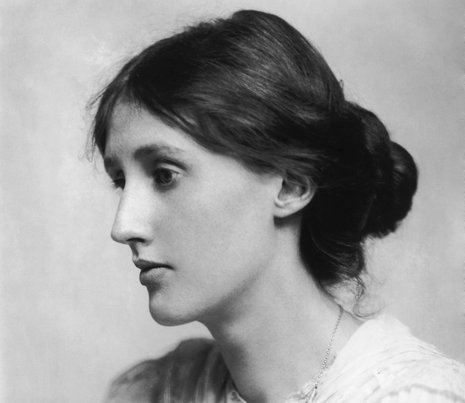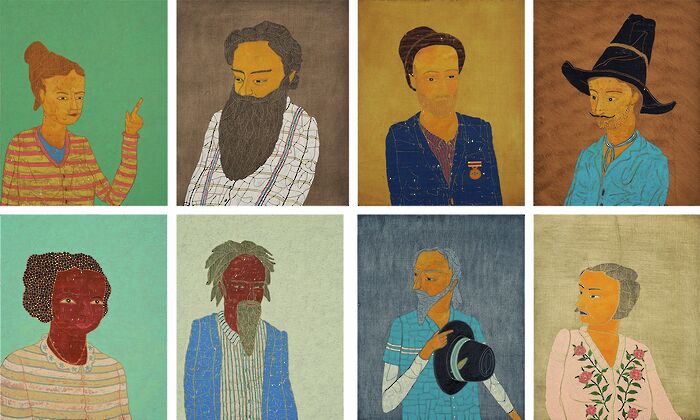Feminist writing that I’ve loved and learnt from
Rosie Chalmers gives us her top recommendations to get stuck into the realm of feminist literature

The return of CUSU’s Women’s Campaign reading group last term introduced me to a number of pioneering feminist writers, like Angela Davis and bell hooks. This got me thinking about the texts that have shaped and educated me. Feminist writing stretches from Aphra Behn’s bawdy plays, to George Eliot, to the explosion criticism and theory in the 70s and 80s. Although there will always be a special place in my heart for Middlemarch, there is a wealth of recent writing, be it poetry or essays, that is just as beautiful, intricate and exciting as the classics.
Children’s
When I was younger I received Sandi Toksvig’s Girls are Best. I can’t remember whether it was a present or a choice; all I remember is poring over it for hours. It’s essentially a collection of stories of female achievement and often forgotten contributions to technology and progress – think Horrible Histories but with a strongly feminist focus. When I started working at a bookshop at 15 I couldn’t find anything like it, but happily this gap has now been filled with Goodnight Stories for Rebel Girls – a much better and more up-to-date version. Adorned with the most beautiful illustrations, it’s a celebration of cultural icons, remarkable scientists, athletes and historical figures.
Fiction
Virginia Woolf’s Orlando is a classic that I love re-reading and one of the most interesting of her texts in terms of exploration in to gender and sexuality. Written for Vita Sackville-West, it reads as a love letter spanning the centuries. However, one of my all-time favourite portrayals of female relationships comes in Tove Janson’s Fair Play. It documents the intertwined life of two solitary artists on an almost deserted island. It is idyllic and heart-breaking all at once and I fell as deeply in love for both Mari and Jonna as they do for each other.
Charlotte Perkins Gilman’s The Yellow Wallpaper was also a text that has stayed with me. Gilman documents the mental unravelling of a woman confined to her room as a treatment of ‘hysteria’. It is also a significant text in terms of understanding where prejudice towards mental health comes from and how it was perceived as a ‘feminine’ affliction. This undeniably continues today as is easily proven when we look at men’s suicide statistics and a reluctance to seek counselling. The magical realist element of the text is also revolutionary, freeing the woman from the confines of the stereotypical narrative and her suffocating marriage.
Angela Carter is another writer who utilises magical realism to allow escape and transgression. Nights at the Circus was a fin-de-siècle work which stunned me with its breath-taking image that a woman has been born with wings, because in the twentieth century all women will rise.
Poetry
I first encountered Sujata Bhatt because of her famous love poems. Many of these are erotic and push against the unspoken taboo of female sexuality but she also writes about her childhood in Gujarat and her family. Monkey Shadows is one of her most famous collections with White Asparagus, an ode to a pregnant woman’s sexual desires, being one of the many incredible and polylingual poems among them.
“Tove Janson’s Fair Play... is idyllic and heart-breaking all at once and I fell as deeply in love for both Mari and Jonna as they do for each other”
Last year saw the twenty-fifth anniversary of the death of Audre Lorde, whose writing remains supremely relevant and challenging. The anniversary also saw the posthumous publication of a collection of poems, essays and speeches in Your Silence Will Not Protect You, which is an amazing amalgamation of her writings and ideas.
A more recent writer to turn to is Travis Alabanza, who spoke at Cambridge in Michaelmas. Travis’ first book of poetry was released last year: Before You Step Outside. It’s a raw exploration of our perceptions of gender and also demonstrates the absence of intersectionality in feminist circles.
Essays and Non-Fiction
Some time back I discovered the small and riveting We Should All Be Feminists at the end of my stocking (shout out to my mum for bringing feminism into Christmas) and it remains a favourite. Adapted for Chimamanda Adichie’s TED talk of the same name, it’s the kind of text you want to gift to people who shy from the word ‘feminist’, as it unpacks cultural attitudes to the label in a funny and deeply personal format. In 2015, Sweden distributed copies to all 16-year-olds in the country, since it was deemed so important. If you enjoyed this or want something more then also get a copy of Dear Ijeawale, or a Feminist Manifesto in 15 Suggestions, which is written as advisory letters to a friend on bringing up her baby girl.
For those of you who’d like to take after my mum in terms of gift giving, Zadie Smith’s new book Feel Free, a collection of essays on everything from dance to mourning, is an ideal choice. Another new release is Ruby Tandoh’s Eat Up which offers simple recipes that returns joy to eating and warns us against damaging lifestyles and punishing diets. Both Adichie and Smith are also of course wonderful fiction writers, taking, for example, their works Americanah and On Beauty.
Finally, Mary Wollstonecraft’s Vindication on the Rights of Women also remains an elegant and joyous call to action, as well as one of the earliest texts on women’s rights.
This does not even begin to cover the vast expanse of feminist writing, but these books are some that have had a profound influence on me and the way I look at the world, as well as giving me the information and basic theory to approach the classics of feminist criticism in the future. Feminist writing is incredibly important in moving ideas forward. But it also incites rage, protest, solidarity and inspires confidence. It gives our feelings of frustration a language to debate in, also fostering a deep love for those who have chosen to communicate and fill the literary landscape with remarkable talent and bravery
 Comment / Plastic pubs: the problem with Cambridge alehouses 5 January 2026
Comment / Plastic pubs: the problem with Cambridge alehouses 5 January 2026 News / Cambridge businesses concerned infrastructure delays will hurt growth5 January 2026
News / Cambridge businesses concerned infrastructure delays will hurt growth5 January 2026 News / New movement ‘Cambridge is Chopped’ launched to fight against hate crime7 January 2026
News / New movement ‘Cambridge is Chopped’ launched to fight against hate crime7 January 2026 News / AstraZeneca sues for £32 million over faulty construction at Cambridge Campus31 December 2025
News / AstraZeneca sues for £32 million over faulty construction at Cambridge Campus31 December 2025 Interviews / You don’t need to peak at Cambridge, says Robin Harding31 December 2025
Interviews / You don’t need to peak at Cambridge, says Robin Harding31 December 2025










